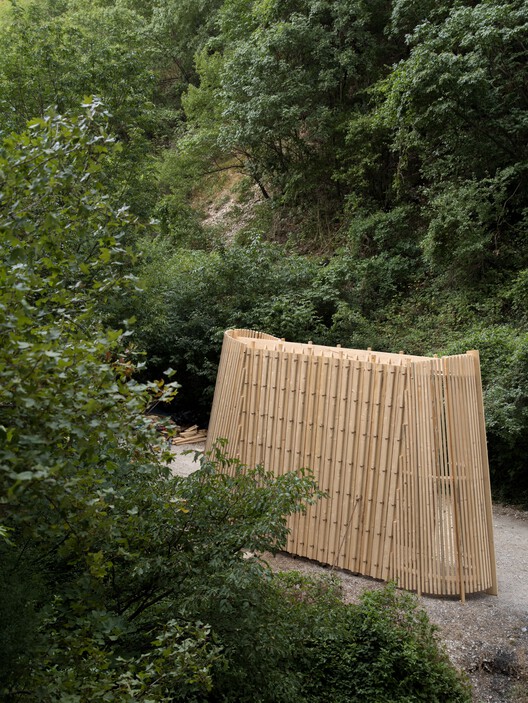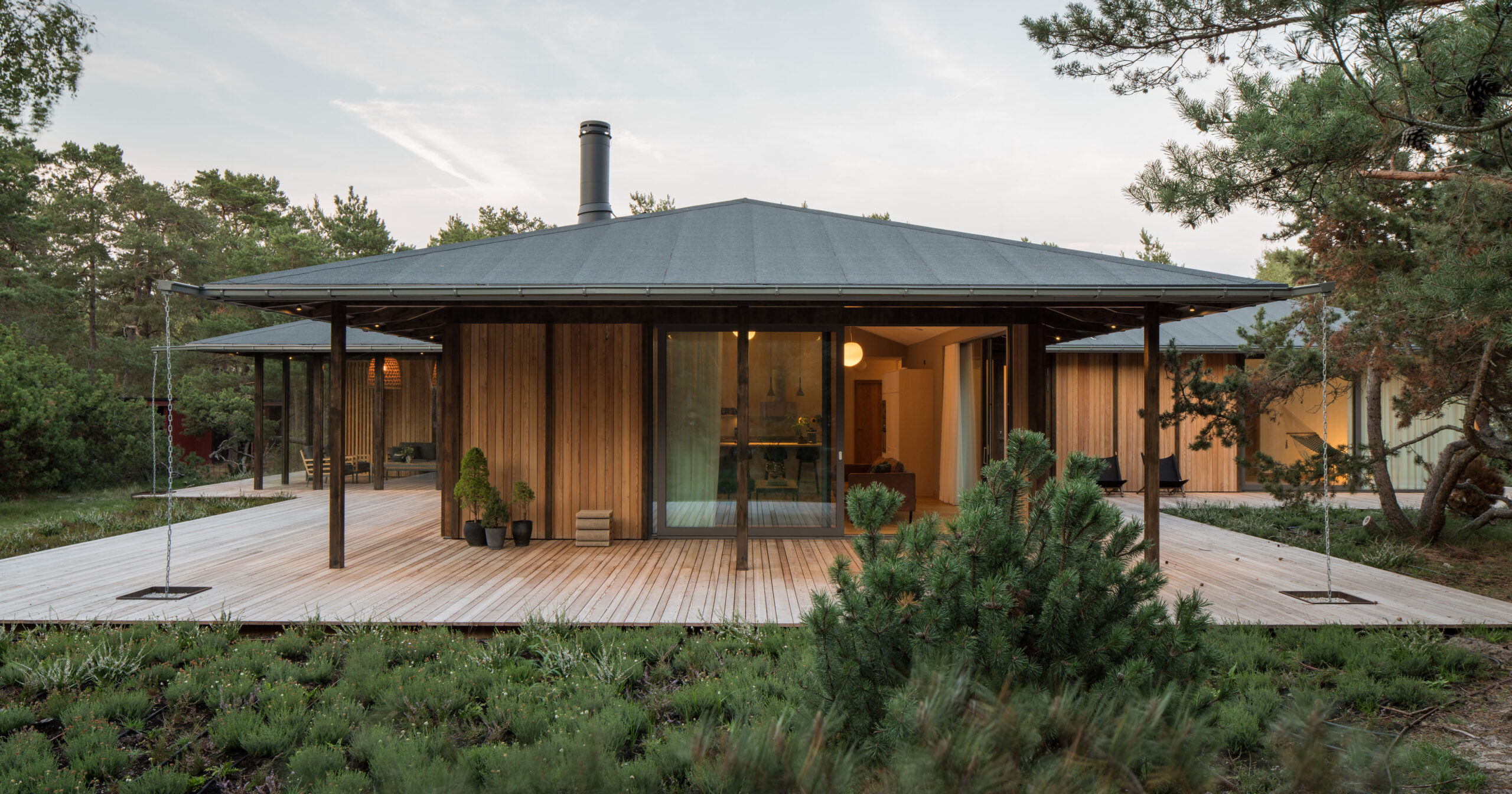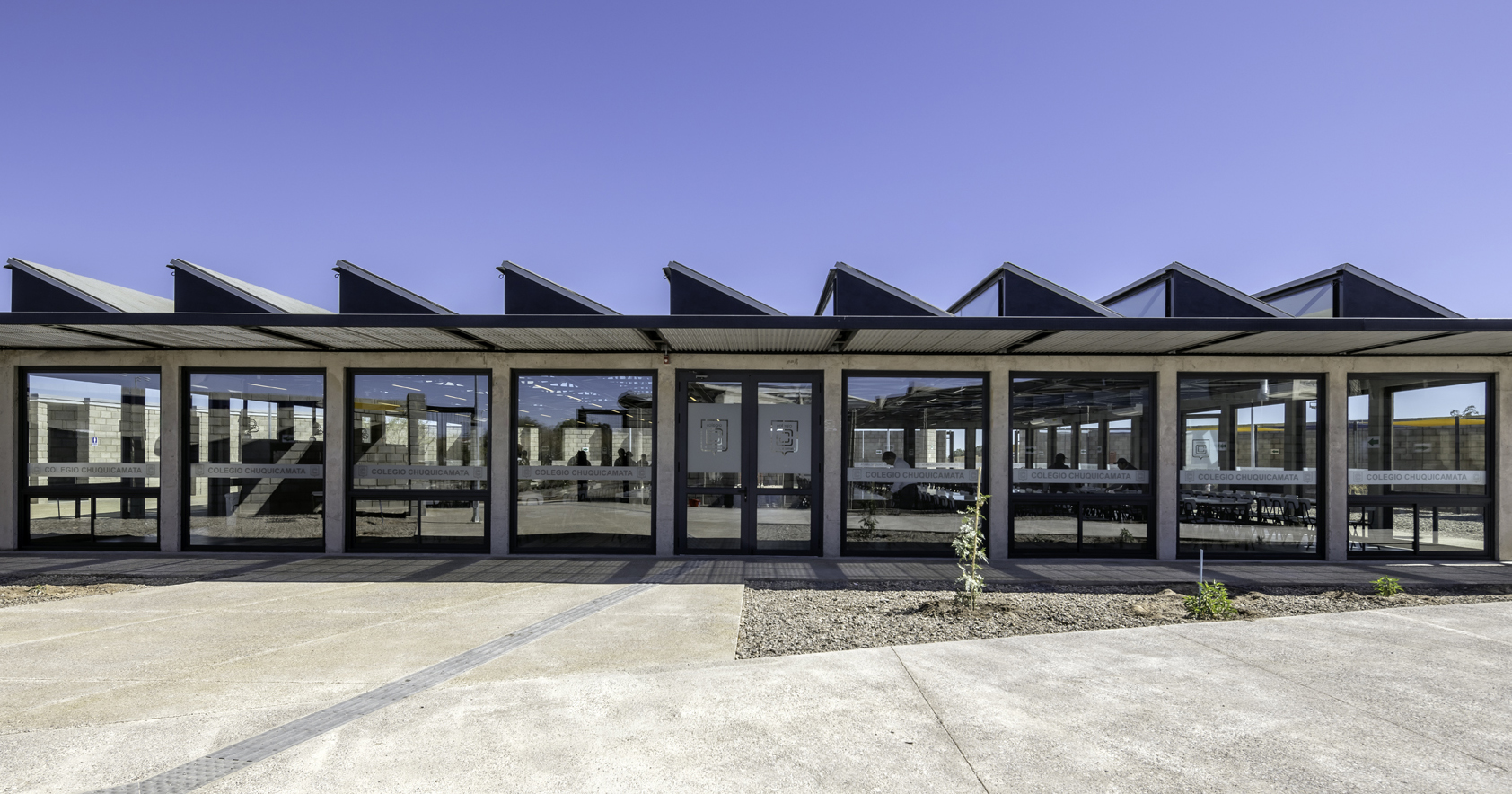Disused station reimagined into agriculture centre among Politecnico di Torino projects


Dezeen School Shows: plans to renovate the disused Morgex station into a village's agriculture and community centre are among the projects from Politecnico di Torino.
Also featured is a volunteer and education centre transforming Turin's Parco del Meisino and a performance space, restaurant and student accommodation complex in Rimini, Italy.
Politecnico di Torino
Institution: Politecnico di Torino
School: Department of Architecture and Design
Courses: Architecture Construction City, Architecture for Sustainability and Architecture for Heritage
Tutors: Matteo Robiglio, Tomà Berlanda, Amedeo Domenico Bernardo Manuello Bertetto, Elena Vigliocco, Alice Barreca, Luca Staricco, Roberto Dini, Valentina Serra, Francesca Thiebat, Michele Bonino, Angelo Sampieri, Massimo Crotti, Claudio Germak, Anna Pellegrino, Louena Shtrepi, Alessandro Armando, Janira Vassallo, Marco Trisciuoglio, Marta Carla Bottero, Camillo Boano, Daniela Ciaffi and Michele Cerruti But
School statement:
"Can academic projects explore new directions and contribute to public discourse on global and local issues? The 2025 Politecnico di Torino Architecture Students Award aimed to address these questions, showcasing how architectural research, training and experimentation can be integrated into a school curriculum.
"Politecnico di Torino is ranked among the top 20 architecture schools in Europe (QS World University Rankings by Subject 2025 – Architecture and Built Environment).
"With over 3,000 students, the Department of Architecture and Design offers a Bachelor's degree in architecture and three Master's programmes – Architecture for Sustainability, Architecture Construction City and Architecture for Heritage – all featuring dedicated English tracks. The Department also offers two Bachelor's and one Master's programmes in Design.
"The Master's students' project selection process featured insights from Mette Ramsgaard Thomsen (Royal Danish Academy and director of CITA - Centre for Information Technology and Architecture), Daniele Belleri (partner at CRA), Paolo Scoglio (The ne[s]t), Michele Bonino and Silvia Gron.
"All awarded projects, along with a curated selection of works from the department courses and studios, are available on the departmental platform."

Adaptive Reuse of Ex-Poste Monteverdi by Shadi Masihi Pour, Kosar Mohammadi, Jessica Priya Sagar and Laura Zotaj
"Ex-Poste Monteverdi is like a monstrous body, stripped bare and floating in Turin's urban sea, no longer architecture, yet not quite a ruin.
"A relic of lost infrastructure, its exposed skeleton now anchors a bold transformation: part bridge, part street, part civic machine. This is not restoration; it is a contradiction.
"The building remains in limbo, its voids activated with water sports, martial arts, therapy, cafes and rooftop beaches.
"It connects districts without resolving them, embracing fracture as a strategy. Ex-Poste Monteverdi is a living purgatory, architecture that refuses to belong, yet insists on being essential."
Students: Shadi Masihi Pour, Kosar Mohammadi, Jessica Priya Sagar and Laura Zotaj
Course: Adaptive reuse of the built legacy
Tutors: Matteo Robiglio, Tomà Berlanda and Amedeo Domenico Bernardo Manuello Bertetto

Project for the renovation of the Parco del Meisino in Turin by Derin Yigit, Kutay Bayhan and Zeynep Ezgi Ogur
"Through a self-generative strategy, the project proposal seeks to re-value and enhance Meisino Park's ecological potential and social initiatives.
"A participatory system centred on volunteers, education and cyclical production was introduced in the park, blended with neighbouring features.
"Within three community axes, this approach strengthens social ties and local production while ensuring ecological, as well as spatial, continuity through the use of biomaterials in architecture, temporary buildings and historical preservation.
"Through its continuous and adaptable structure, the project supports architectural, social and environmental sustainability in an effort to become a communal component of the cultural legacy."
Students: Derin Yigit, Kutay Bayhan and Zeynep Ezgi Ogur
Course: Heritage renovation and enhancement project
Tutors: Elena Vigliocco, Alice Barreca and Luca Staricco

Freightscape by Eric Antohi, Sara Giudice, Paolo Francesco Marino and Maurizio Gianfranco Moretti
"Freightscape imagines a future in which logistics engulfs the city, transforming Castel San Giovanni into a new urban paradigm.
"Through progressive phases, logistics expands by including infrastructures, residences, energy and services, up to the point of giving life to a city entirely shaped around its needs.
"The project addresses the tension between economic needs and territorial integrity, proposing a model that concentrates logistical pressure to safeguard other contexts.
"Without promoting land consumption, it defines ecological areas forbidden to humans. At the centre, a three-level infrastructure, trucks, cars, pedestrians, organises functions and flows, giving shape to a complex urban ecosystem."
Students: Eric Antohi, Sara Giudice, Paolo Francesco Marino and Maurizio Gianfranco Moretti
Course: Architecture and Urban Space
Tutors: Michele Bonino and Angelo Sampieri

The Lane: As an Adaptive Space by Soroush Mohammadtaheri, Saba Ranjbarbalaei, Milla Randsborg and Emma HengWalaunet
"The Lane reimagines northern Turin through a bold linear intervention sparked by metro line two.
"Uniting a fragmented landscape, from a historic cemetery to vibrant markets and former industrial sites, the design creates a continuous shared space spine anchored by a multifunctional water basin and sunken playground.
"Vacant plots are transformed into dynamic public spaces, promoting inclusion, movement and community life. Traffic is calmed, nature is amplified and boundaries are softened.
"This urban thread redefines the district's identity, turning voids into active commons and sparking a resilient, people-first neighbourhood revival, a sustainable strategy of reconnection, softness and social vibrancy."
Students: Soroush Mohammadtaheri, Saba Ranjbarbalaei, Milla Randsborg and Emma HengWalaunet
Course: Adaptive Public Spaces
Tutors: Massimo Crotti, Claudio Germak, Anna Pellegrino and Louena Shtrepi

Spina (dis)Reale by Corrado Michele, Dotta Andrea, Simone Maria Antonietta and Tzekova Elizabet
"The project intervenes on the Spina Reale in Turin, transforming a linear infrastructure into an active urban system.
"Through the design of elevated walkways and targeted connective devices, transversal relationships are activated between courtyards, public spaces and fragmented urban fabrics.
"At the site of the future line 12, stop eight, the intervention intensifies: an architectural canopy marks the urban node, creating a recognisable place.
"The walkway expands into a stepped building, becoming both inhabitable and scenographic space. The project functions as a narrative infrastructure, generating crossings, events and new opportunities for urban encounter."
Students: Corrado Michele, Dotta Andrea, Simone Maria Antonietta and Tzekova Elizabet
Course: Architettura e spazio urbano
Tutors: Alessandro Armando and Janira Vassallo

Reimagining the ruins: Rimini’s urban reactivation by Daniela Figueroa Martínez and Jonathan Hernandez Rojas
"This project reimagines Rimini's historic core through a masterplan titled Unfolding the Spettacolo, inspired by the city's performative legacy.
"Key streets become thematic urban corridors linked by a central spine. Two architectural interventions anchor the plan: a bridge-like volume spans the Ex Convento di San Francesco, hosting a restaurant and walkway over the ruins, acting as a gate to the municipal market.
"At Palazzo Lettimi, a new student dormitory and open performance space support student life and foster artistic creation.
"The project blends heritage, everyday use, and feasibility to foster a more resilient, connected and culturally vibrant Rimini."
Students: Daniela Figueroa Martínez and Jonathan Hernandez Rojas
Course: Architecture and Urban Economics
Tutors: Marco Trisciuoglio and Marta Carla Bottero

The Bluefin Tuna. Ecology at risk by Salvatore Tartaglia, Zhenhao Chen, Diego Eduardo Hernandez Santa Maria and Alma Eliza Shiamtani
"The project proposes a regenerative strategy to protect bluefin tuna, an endangered species, by restoring algae forest habitats.
"Through research conducted in the Mediterranean and globally, the project denounces unsustainable industrial practices and legal injustices that threaten marine biodiversity.
"Combining ecological design with critical studies on property, common goods and traditional fishing communities, the project presents a future of coexistence in which marine environments are not exploited as factories, but restored as resilient ecosystems capable of sustaining both species and communities."
Students: Salvatore Tartaglia, Zhenhao Chen, Diego Eduardo Hernandez Santa Maria and Alma Eliza Shiamtani
Course: Architecture, Society and Territory B
Tutors: Camillo Boano, Daniela Ciaffi and Michele Cerruti But

Autonoma. Sustainable redevelopment of the Morgex by Agnese Ferro, Aurora Gazzilli, Enrico Mola and Luca Savelli
"The project transforms the former disused Morgex station into the village's core, aiming to enhance the site and reconnect it to the local agricultural and community network.
"The redevelopment includes reactivating the railway line, as well as creating new spaces: a school, a market, an educational garden and a workshop for the employment inclusion of people with disabilities.
"Through design for all and sustainable strategies, the project promotes autonomy, social integration and environmental comfort.
"The use of innovative materials such as unfired earth and rice, combined with bioclimatic solutions, makes the building a replicable model of inclusive and ecological architecture."
Students: Agnese Ferro, Aurora Gazzilli, Enrico Mola and Luca Savelli
Course: Progettazione ecocompatibile dell'architettura B
Tutors: Roberto Dini, Valentina Serra and Francesca Thiebat
Partnership content
This school show is a partnership between Dezeen and Politecnico di Torino. Find out more about Dezeen partnership content here.
The post Disused station reimagined into agriculture centre among Politecnico di Torino projects appeared first on Dezeen.








_003.JPG)











































